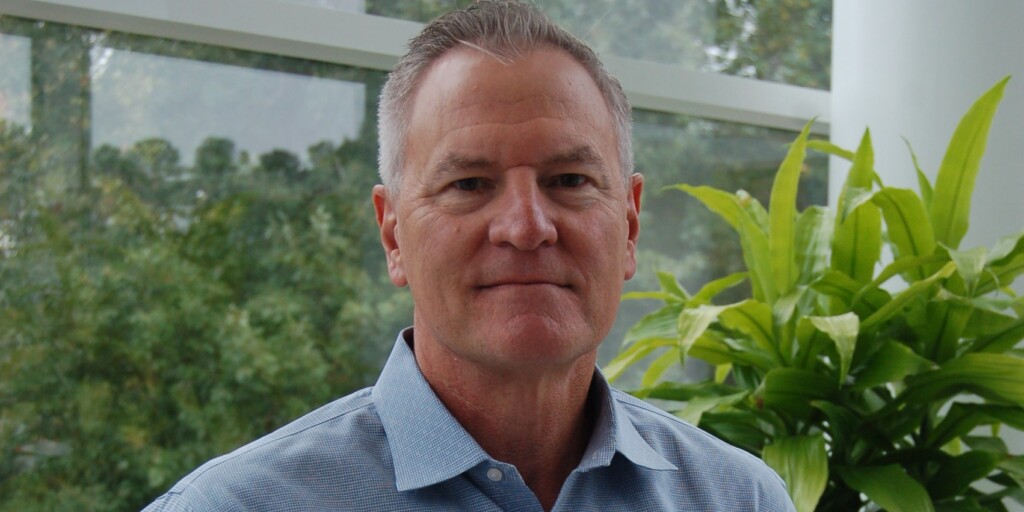
Five Questions with LGMD Researcher Martin Childers
By Jeanene Swanson | Monday, September 30, 2019
Martin Childers, PhD, DO, chief medical officer at Asklepios BioPharmaceutical Inc. in North Carolina, was awarded an MDA research grant totaling $192,500 over one year to perform pre-clinical studies using an adeno-associated virus (AAV) to deliver a gene therapy for limb-girdle muscular dystrophy type 2I (LGMD2I).

Limb-girdle muscular dystrophies are a diverse group of disorders with many subtypes categorized by disease gene and inheritance. LGMD2I (also known as LGMDR9) is caused by mutations in the gene encoding fukutin-related protein (FKRP). In gene-replacement therapy for LGMD2I, an AAV vector is used to deliver a normal copy of the missing or mutated FKRP gene to a patient’s cells in order to make up for the inherited, non-functioning copy.
With this funding, Dr. Childers and Asklepios will build upon existing proof-of-concept work to collect the remaining pre-clinical data necessary for a first-in-human gene transfer clinical trial using AAV-FKRP in patients with LGMD2I. Upon successful completion of these studies, Asklepios will submit an Investigational New Drug (IND) application to the US Food and Drug Administration (FDA), aiming to start a clinical trial in late 2020.
Please describe your current research.
The project funded in part by MDA will support a critical and necessary pre-clinical study required by regulators to determine the proper dose of gene therapy to give to patients. Specifically, the project studies a rodent model of LGMDR9 in which affected animals are provided with the gene therapy, and the effects of the therapy are carefully and methodically studied to determine the dosing effects of the tested gene therapy drug.
What is the focus of your research in LGMD, and why is it important?
At AskBio, the focus is two-fold: to develop safe and effective gene therapeutics and to find ways to increase access and lower cost for those in need of therapy. Thus, we are not only advancing transformative therapeutics into clinical trials but also advancing how they are made, stored, and delivered.
There are more than 7,000 rare diseases and the vast majority are caused by genetic defects. In the case of the rare disease LGMDR9, there is currently no effective therapy on the horizon. Thus, rare diseases like LGMDR9 illustrate the massive unmet medical need for effective therapy. Fortunately, we are changing that dynamic and have developed a drug that safely delivers a healthy gene to restore function of the defective gene that causes LGMDR9.
What inspired you to study LGMD?
As a clinician specializing in neuromuscular diseases for more than 20 years, the reality of a life cut short for many patients with inherited genetic disease fueled a relentless desire to find transformative medicine.
The promise that gene therapy can actually change the face of healthcare and potentially provide cures for many who suffer seemed far off on the horizon for many years. While at first this was a dream, it has now become a reality with gene therapy products in the clinic. I am inspired by the families and patients who, against insurmountable odds, share a desire to enable gene therapy technology not just for neuromuscular diseases but for all genetic disorders. They do so knowing that answers may not be in time for their own benefit but for what it can mean to many in the future.
I see a world where lives can be changed forever with a single dose of genetic medicine — safely and effectively delivering healthy genes to correct mutated or missing genetic information. As we see the incredible response to AAV gene therapy in rare diseases like spinal muscular atrophy, hemophilia, Duchenne muscular dystrophy, and congenital blindness, to name a few, this project and others that MDA is helping to support furthers the potential for groundbreaking and life-changing results.
What is the expected outcome of your research?
Our underlying expectation is to advance our knowledge and the efficacy of all gene therapeutics. Specifically for LGMDR9, we expect to find the precise range of dosing that corrects the underlying disease in the rodent model. This study informs our human trial and a path to commercialization for a transformative therapeutic.
How will your research lead to treatments and cures?
We are giving those with LGMDR9 targeted medicine that is specific to their needs. It also informs other research and advancements of other neuromuscular disorders. This work will add to the accumulating body of knowledge in not only rare neuromuscular diseases but all neuromuscular diseases where AAV gene therapy can correct the underlying cause of genetic diseases.
The advances of AAV gene transfer have opened up a new avenue to potentially cure neuromuscular disease like LGMDR9. While there are still technical hurdles for the gene therapy field to address, the recent success of several clinical trials and new approved gene therapy products illustrate how we are transforming healthcare. Working across the healthcare ecosystem that includes doctors, scientists, research organizations, advocacy groups, insurers, bioscience companies, and gene therapy manufacturers, we must ensure transformative medicines can be immediately and cost-effectively accessible.
Why is it important that MDA continue to fund research in LGMD?
MDA has long been involved in funding gene therapy research for diseases like LGMDR9. The research to identify disease-causing gene defects provides the necessary information needed to develop targeted therapies to replace or repair defected genes with AAV technology. Thus, the funds allow us to advance specific therapeutics and to find ways to expand accessibility and lower cost.
Disclaimer: No content on this site should ever be used as a substitute for direct medical advice from your doctor or other qualified clinician.




